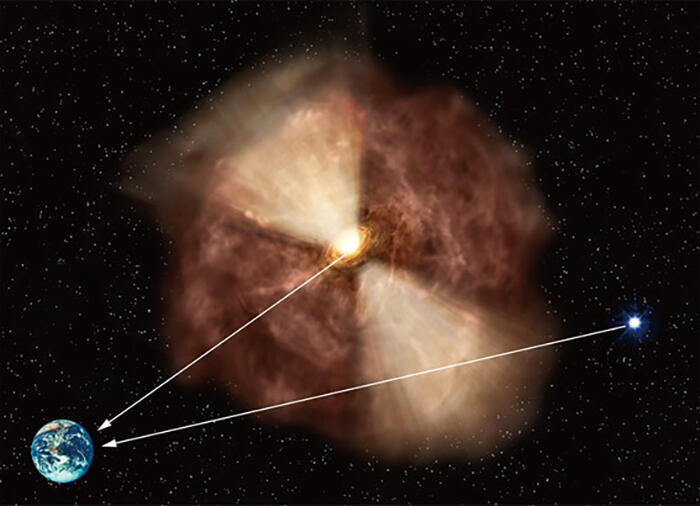A research group led by Professor Toru Misawa of the School of General Education, Shinshu University, Professor Nobunari Kashikawa of the Department of Astronomy, Graduate School of Science, the University of Tokyo, and Professor Katsuya Okoshi of the Institute Arts and Sciences, Tokyo University of Science, has discovered for the first time in the world that the internal structure (dust torus) of the center (quasar) of bright galaxies in the distant universe may have an anisotropic effect on the gas (intergalactic gas) distributed in the vast surrounding region.

(Credit: Shinshu University)
Quasars emit powerful ultraviolet radiation, which ionizes hydrogen gas (intergalactic gas) around the galaxy. If this ultraviolet radiation is isotropic, the ionization of the gas around the galaxy (ionization level) should be constant regardless of direction, but previous studies have reported that the ionization level is biased. The degree of ionization can be measured by how much hydrogen (neutral hydrogen) remains before the electrons are stripped off. Neutral hydrogen has the property of absorbing certain light, so when it is present in large quantities in front of a quasar, it is recorded as an absorption line on the quasar spectrum. Using this method to determine the amount of neutral hydrogen gas, the research group found that the Absorption Lines are weaker (higher ionization levels) in the vicinity of quasars (within a few million light years). This is called the line-of-sight proximity effect.
The research group then selected 12 ideal BAL quasars from the Sloan Digital Sky Survey (SDSS) quasar catalog, which contains about 750,000 objects, after considering various conditions. BAL quasars have a special absorption structure called Broad Absorption Lines on the spectrum. In addition to the SDSS data, new detailed observations using the Subaru telescope show that the tangential absorption of the BAL quasar is weak, less than a quarter of the absorption intensity around a conventional quasar without BAL (non-BAL quasar).
The results suggest that the high ionization level (large amount of UV radiation) of the intergalactic gas tangential to the BAL quasar can be explained by anisotropic UV radiation due to the dust torus. This led to the identification of a doughnut-shaped dust torus inside the quasar that may reproduce anisotropic radiation.
Intergalactic gas distributed in the universe has been gradually ionized by ultraviolet radiation emitted from quasars and galaxies. The anisotropic nature of ultraviolet radiation from quasars provides important information for detailed exploration of the ionization history of the universe.
The current study was based on a relatively small sample of 12 objects, but a larger sample is essential for a more detailed discussion. If they can use a new instrument, the Prime Focus Spectrograph (PFS), which will be operational at the Subaru Telescope from 2024, researchers will be able to capture a large number of spectra of faint objects at once, which is expected to greatly advance research.
"Our research is the result of five years of work and is very valuable," explains Professor Misawa. "However, the sample size is insufficient. Moving forward, we would like to expand the scope of our observations using the PFS on the Subaru Telescope and confirm the effects of quasars on surrounding gases with a high degree of accuracy."
This article has been translated by JST with permission from The Science News Ltd.(https://sci-news.co.jp/). Unauthorized reproduction of the article and photographs is prohibited.




